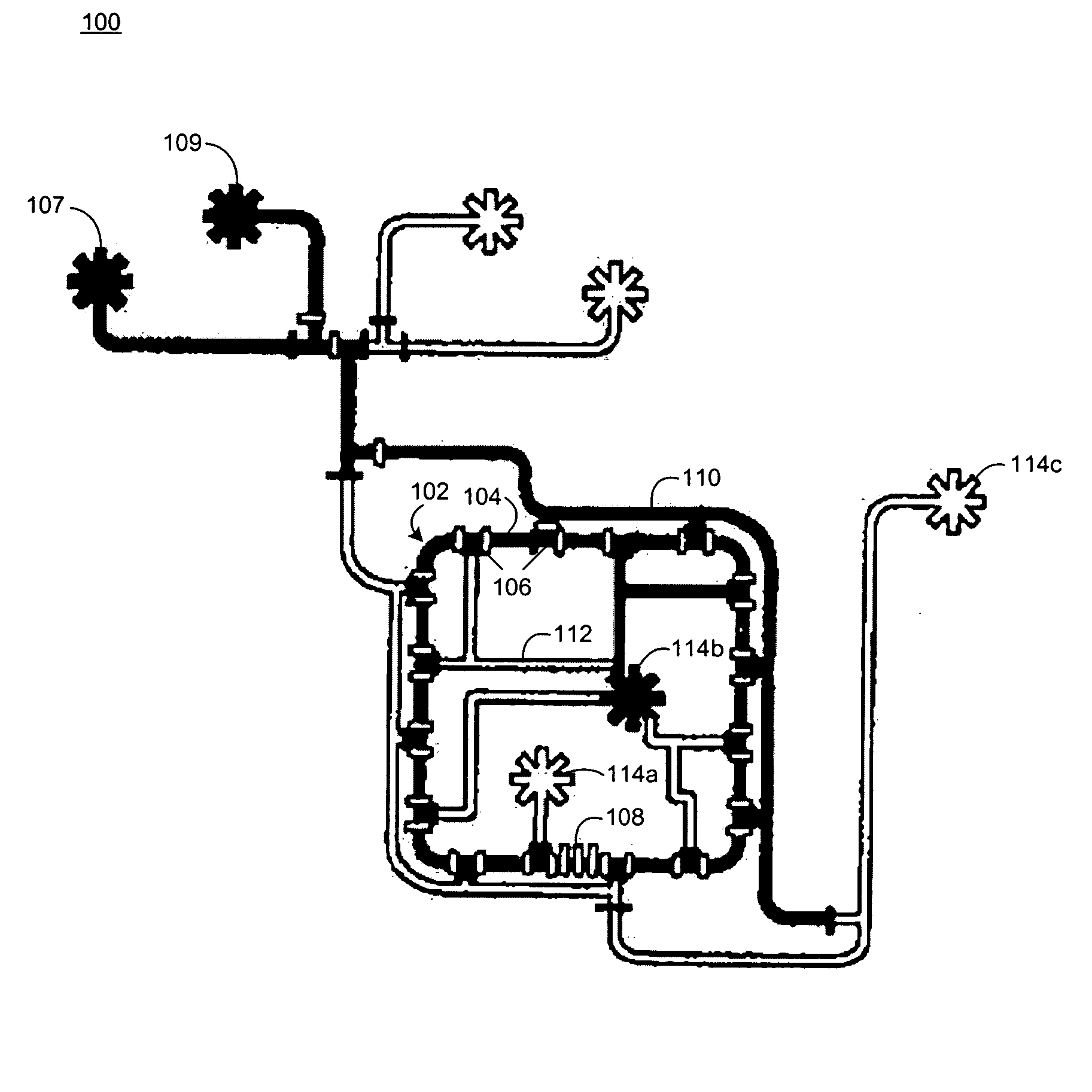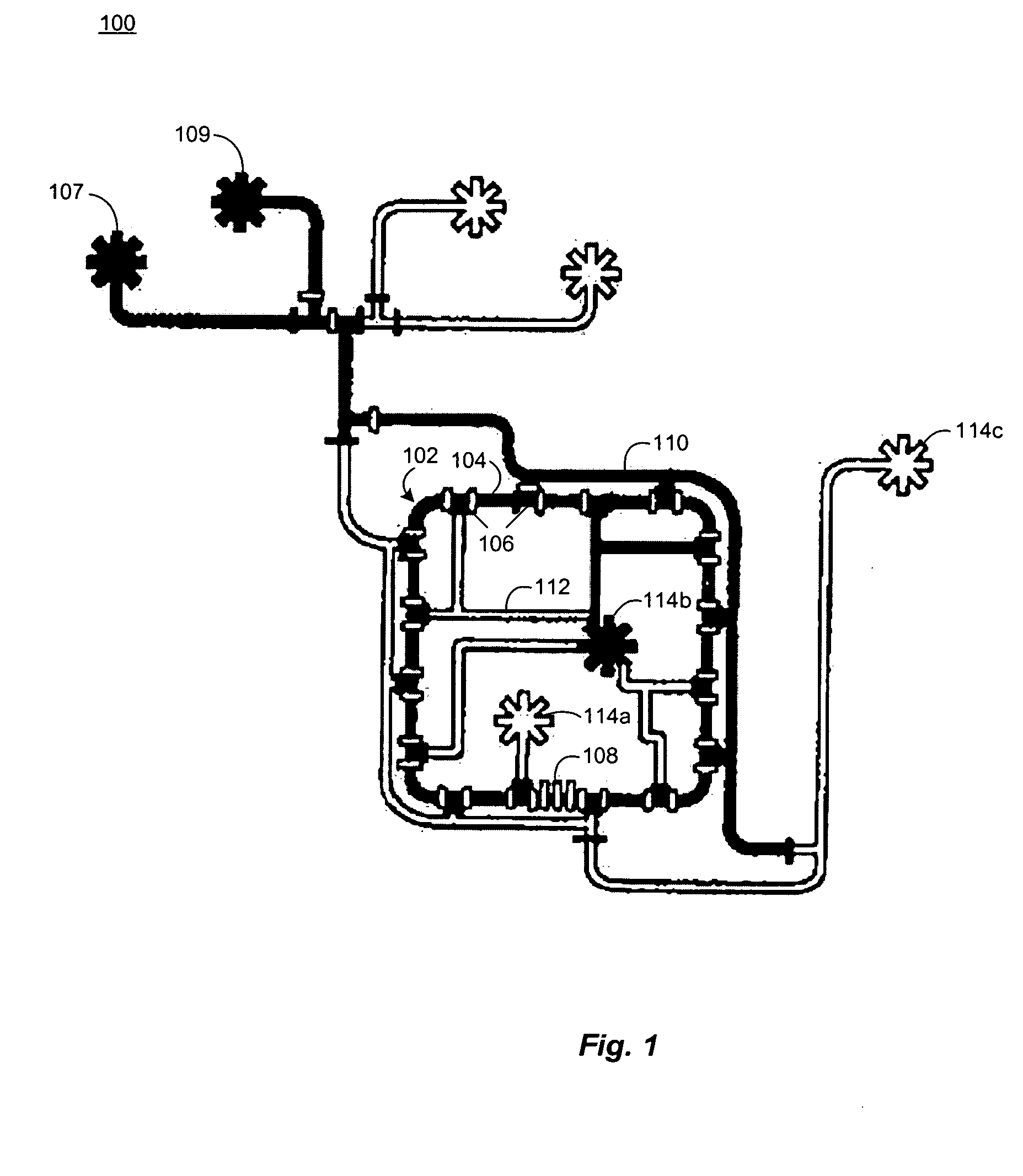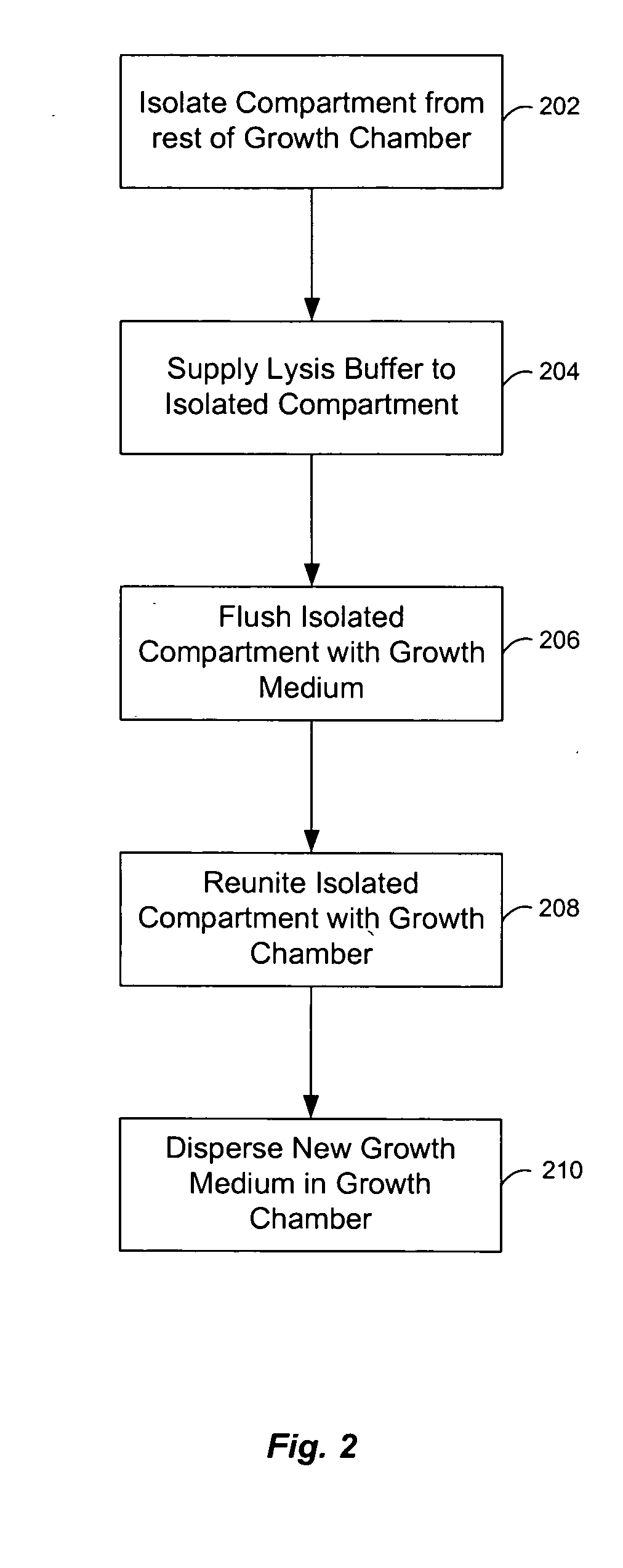Microfluidic chemostat
a technology of microfluidic chemostat and chemostat, which is applied in the field of microfluidic chemostat, can solve the problems of difficult to produce microfluidic chemostat synthetically for medical treatment, inexact measurement of plating, and inability to grow at an unknown ra
- Summary
- Abstract
- Description
- Claims
- Application Information
AI Technical Summary
Benefits of technology
Problems solved by technology
Method used
Image
Examples
Embodiment Construction
[0062] Chemostats of the present invention include microfluidic chemostats having growth chambers divided into two or more compartments. These chemostats can operate with low quantities of growth reagents / medium, which reduces the costs of the chemostat experiments. They may also be operated such that discrete cleaning of the chemostat compartments can occur while an experiment is being conducted, which reduces or prevents the formation of biofilms on the walls of the device.
[0063] The small size of the microfluidic chemostats of the invention have high surface area to volume ratio (e.g., about 100 times the surface area to volume ratio of a conventional chemostat). The high ratio permits a larger percentage of the growth chamber surface (e.g., about 55% of the surface or more) to serve as a diffusion interface for the diffusion of gases such as oxygen (O2) and carbon dioxide (CO2). The gas diffusion may be further enhanced by constructing the growth chamber out of materials that h...
PUM
| Property | Measurement | Unit |
|---|---|---|
| volume | aaaaa | aaaaa |
| volume | aaaaa | aaaaa |
| thickness | aaaaa | aaaaa |
Abstract
Description
Claims
Application Information
 Login to View More
Login to View More - R&D
- Intellectual Property
- Life Sciences
- Materials
- Tech Scout
- Unparalleled Data Quality
- Higher Quality Content
- 60% Fewer Hallucinations
Browse by: Latest US Patents, China's latest patents, Technical Efficacy Thesaurus, Application Domain, Technology Topic, Popular Technical Reports.
© 2025 PatSnap. All rights reserved.Legal|Privacy policy|Modern Slavery Act Transparency Statement|Sitemap|About US| Contact US: help@patsnap.com



